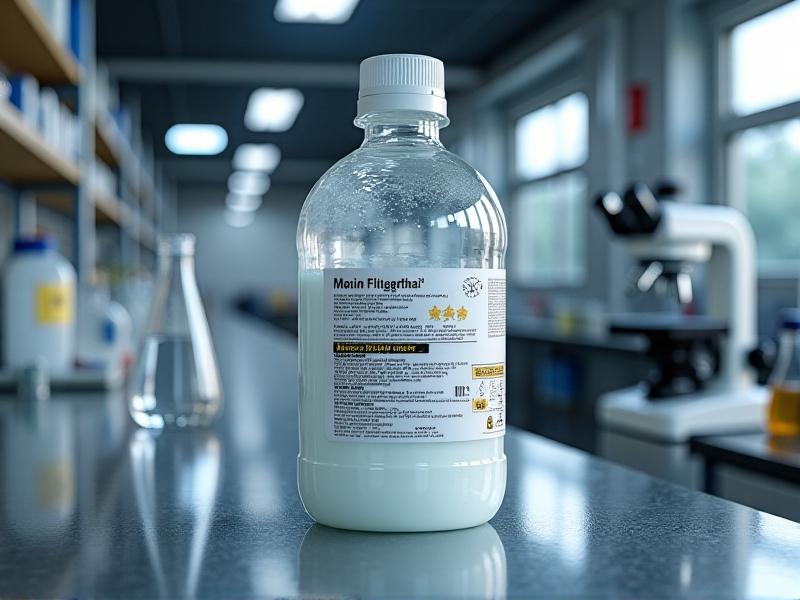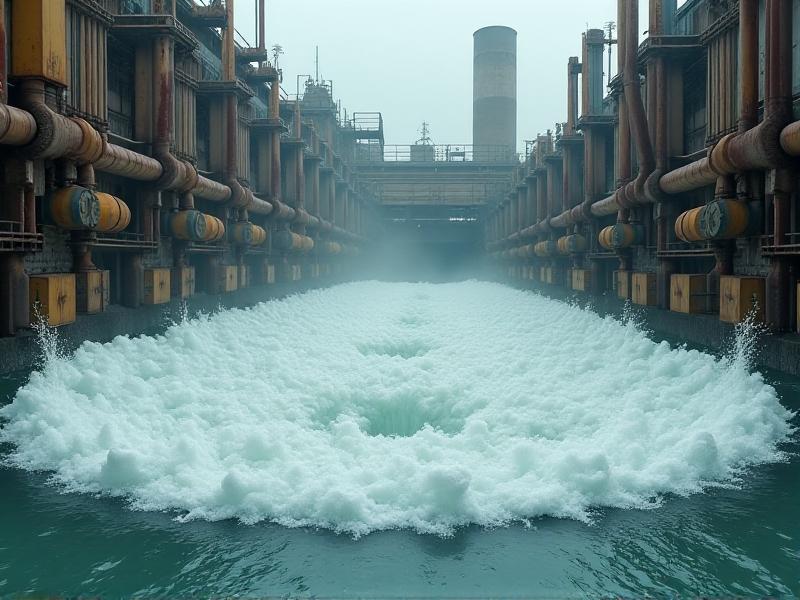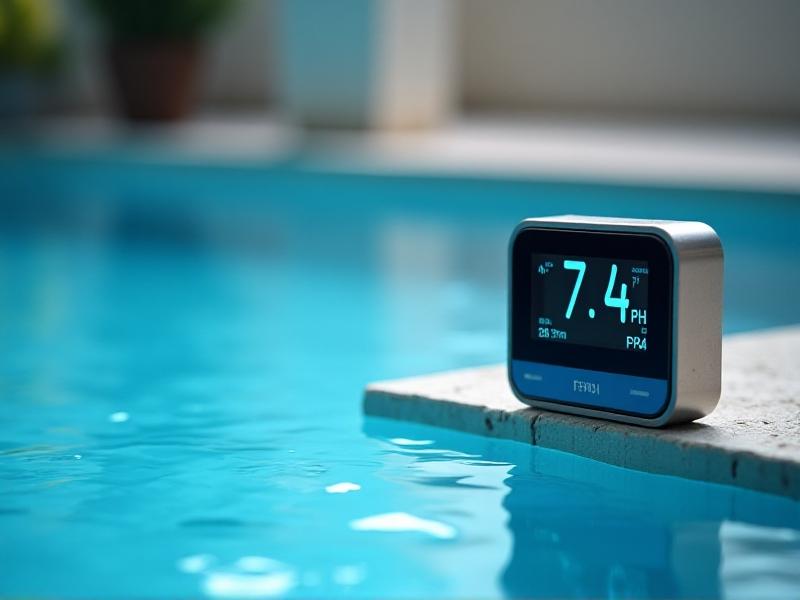Anti-Foaming Agents in Turbulent Pools
Understanding Anti-Foaming Agents: The Basics
Anti-foaming agents are chemical additives used to reduce or eliminate foam formation in various industrial processes. In turbulent pools, such as those found in wastewater treatment plants, chemical reactors, or even large-scale swimming pools, foam can be a significant issue. Foam not only disrupts the efficiency of operations but can also lead to safety hazards and equipment damage. Anti-foaming agents work by breaking down the foam bubbles, allowing the liquid to flow more smoothly and maintain operational integrity.
These agents are typically composed of oils, silicones, or other hydrophobic substances that destabilize the foam's structure. They are added in small quantities but have a profound impact on the system's performance. Understanding the chemistry behind these agents is crucial for selecting the right product for specific applications. For instance, silicone-based anti-foaming agents are often preferred in high-temperature environments due to their stability, while oil-based agents are more suitable for organic systems.

The Role of Turbulence in Foam Formation
Turbulence plays a critical role in foam formation, especially in systems where liquids are agitated or aerated. In turbulent pools, the constant movement of liquid creates air bubbles, which are then stabilized by surfactants or proteins present in the solution. These bubbles accumulate at the surface, forming foam. The intensity of turbulence directly affects the amount and stability of the foam, making it a key factor to consider when addressing foam-related issues.
In industrial settings, turbulence is often unavoidable. For example, in wastewater treatment plants, mechanical aerators are used to introduce oxygen into the water, promoting the growth of beneficial bacteria. However, this aeration process also generates foam, which can interfere with the treatment process. Similarly, in chemical reactors, mixing and agitation are essential for uniform reactions, but they can also lead to excessive foam formation. Understanding the relationship between turbulence and foam is essential for implementing effective anti-foaming strategies.

Types of Anti-Foaming Agents and Their Applications
Anti-foaming agents come in various forms, each suited to different environments and applications. Silicone-based anti-foaming agents are widely used in industries such as food processing, pharmaceuticals, and petrochemicals due to their high efficiency and stability under extreme conditions. Oil-based agents, on the other hand, are often employed in organic systems like fermentation processes, where they are less likely to interfere with the biological activity.
Water-based anti-foaming agents are another category, typically used in applications where silicone or oil residues are undesirable. These agents are often preferred in the paper and pulp industry, where they help control foam during the production process without affecting the quality of the final product. Additionally, powdered anti-foaming agents are available for specific applications, such as in detergents or cleaning products, where ease of dispersion is important.

Challenges in Using Anti-Foaming Agents in Turbulent Pools
While anti-foaming agents are highly effective, their use in turbulent pools presents unique challenges. One of the primary concerns is the dosage. Too little agent may not adequately control the foam, while too much can lead to undesirable side effects, such as residue buildup or interference with the process. Achieving the right balance requires careful monitoring and adjustment based on the specific conditions of the pool.
Another challenge is the compatibility of the anti-foaming agent with the system. In some cases, the agent may react with other chemicals present in the pool, leading to reduced effectiveness or even harmful byproducts. Additionally, the physical properties of the agent, such as viscosity and solubility, must be considered to ensure it can be evenly distributed throughout the turbulent pool. Addressing these challenges requires a thorough understanding of both the agent and the system in which it is being used.
Best Practices for Implementing Anti-Foaming Strategies
Implementing effective anti-foaming strategies in turbulent pools requires a combination of proper agent selection, dosage control, and system monitoring. The first step is to identify the root cause of the foam formation, whether it is due to turbulence, chemical composition, or other factors. Once the cause is understood, the appropriate anti-foaming agent can be selected based on its compatibility with the system and its effectiveness in controlling foam.
Dosage control is critical to ensure the agent is used efficiently without causing adverse effects. Automated dosing systems can be employed to maintain consistent levels of the agent in the pool, reducing the need for manual adjustments. Regular monitoring of the pool's foam levels and overall performance is also essential to identify any issues early and make necessary adjustments. By following these best practices, operators can effectively manage foam in turbulent pools and maintain optimal system performance.
Environmental and Safety Considerations
The use of anti-foaming agents in turbulent pools must also take into account environmental and safety considerations. Many anti-foaming agents are chemical-based, and their release into the environment can have harmful effects. It is essential to choose agents that are biodegradable and environmentally friendly, especially in applications where the treated water is discharged into natural water bodies.
Safety is another critical factor, as some anti-foaming agents can be hazardous to human health if not handled properly. Workers should be provided with appropriate protective equipment and training to minimize exposure to these chemicals. Additionally, proper storage and disposal of anti-foaming agents are necessary to prevent accidents and environmental contamination. By prioritizing environmental and safety considerations, industries can ensure the responsible use of anti-foaming agents in turbulent pools.
Future Trends in Anti-Foaming Technology
The field of anti-foaming technology is continually evolving, with new innovations aimed at improving efficiency and reducing environmental impact. One emerging trend is the development of bio-based anti-foaming agents, which are derived from natural sources and are more sustainable than traditional chemical agents. These bio-based agents are gaining popularity in industries that prioritize eco-friendly practices, such as food processing and cosmetics.
Another trend is the integration of smart technologies into anti-foaming systems. Automated monitoring and dosing systems, powered by sensors and artificial intelligence, are becoming more common in industrial settings. These systems can detect changes in foam levels in real-time and adjust the dosage of the anti-foaming agent accordingly, ensuring optimal performance with minimal human intervention. As these technologies continue to advance, they are expected to play a significant role in the future of anti-foaming strategies in turbulent pools.








